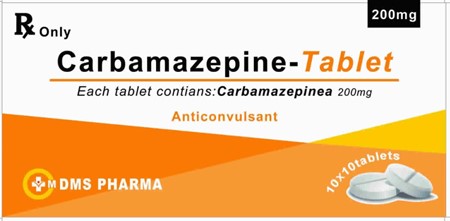Prior to administering the evening dose of carbamazepine, the nurse noted that the client’s morning carbamazepine level was 8.4 mg/L. Which action should the nurse take?
Withhold this dose of carbamazepine.
Notify the healthcare provider of the carbamazepine level.
Assess the client for side effects of carbamazepine.
Administer the carbamazepine as prescribed.
The Correct Answer is D
A carbamazepine level of 8.4 mg/L is within the therapeutic range of 4-12 mg/L. The nurse should administer the evening dose of carbamazepine as prescribed. The nurse should continue to monitor the client’s carbamazepine levels and assess for any side effects of the medication.

Nursing Test Bank
Naxlex Comprehensive Predictor Exams
Related Questions
Correct Answer is C
Explanation
Epoetin alfa is a medication that stimulates the production of red blood cells and is commonly used to treat anemia in patients with chronic kidney disease. Hemoglobin level is the most important parameter to monitor the effectiveness of epoetin alfa therapy. An increase in hemoglobin level indicates an improvement in the patient's anemia and suggests that the medication is effective.
While options a, b, and d are also important considerations in the management of anemia, they do not provide a definitive indication of the effectiveness of epoetin alfa therapy. Reports of increased energy levels and decreased fatigue can be subjective and influenced by many factors. Taking concurrent iron therapy without adverse effects is important to support the production of red blood cells but does not confirm the effectiveness of epoetin alfa. Increased consumption of iron-rich foods can be helpful in managing anemia, but it does not provide a direct indication of the effectiveness of epoetin alfa therapy.

Correct Answer is D
Explanation
Guaifenesin is an expectorant that helps to loosen and thin mucus in the airways, making it easier to cough up. It is commonly used to manage symptoms of a chronic productive cough in conditions such as COPD.
Salmeterol and Tiotropium are both bronchodilators that help to open up the airways and improve breathing in COPD, but they are not specifically indicated for managing a chronic productive cough.
Prednisone is a corticosteroid that can help reduce inflammation in the airways and improve breathing in COPD exacerbations, but it is not typically used for managing a chronic productive cough.

Whether you are a student looking to ace your exams or a practicing nurse seeking to enhance your expertise , our nursing education contents will empower you with the confidence and competence to make a difference in the lives of patients and become a respected leader in the healthcare field.
Visit Naxlex, invest in your future and unlock endless possibilities with our unparalleled nursing education contents today
Report Wrong Answer on the Current Question
Do you disagree with the answer? If yes, what is your expected answer? Explain.
Kindly be descriptive with the issue you are facing.
